|
|
|
|
 |
آخرین مقالات چاپ و ارائه شده در مجلات و کنفرانس ها |
 |
|
|
|
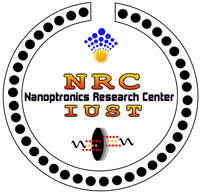
مقالات کنفرانس | 1 | S. Mohammadnejad, N. Ehteshami, “Novel design to compensate dispersion for index-guiding photonic crystal fiber with defected core,” in proceedings of 2nd International Conference on Mechanical and Electronics Engineering (ICMEE), pp. 417-421, 2010. | 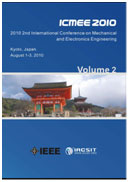 | Abstract. In this paper we present a novel dispersion compensating photonic crystal fiber with defected core. The small central defect of air hole can flexibly control the chromatic dispersion properties of this kind of photonic crystal fiber. The 2-D finite difference frequency domain method (FDFD) with perfectly matched layers (PML) is used to investigate dispersion properties. By varying the size of defected core, it is possible to obtain high negative dispersion coefficient. The proposed photonic crystal fiber is suitable for broadband dispersion compensation in wavelength division multiplexing (DWDM) optical communication systems. | 2 | S. Mohammadnejad, N. Ehteshami, “A novel design to compensate dispersion for square-lattice photonic crystal fiber over E to L wavelength bands,” in proceedings of 7th International Symposium on Communication Systems Networks and Digital Signal Processing (CSNDSP) , pp. 654-658, 2010. | 
| Abstract. This paper reveals a novel square-lattice photonic crystal fiber for dispersion compensation in a wide range of wavelengths. The 2-D finite difference frequency domain method (FDFD) with perfectly matched layers (PML) is used to investigate dispersion properties. It has been shown theoretically that it is possible to obtain high negative dispersion coefficient and confinement losses less than 10-5 dB/m in the entire wavelengths band. | 3 | S. Mohammad Nejad, A. AlizadeVandchali, “ A Novel Structure Based on Nonlinear Photonic Crystal to Improve the Kerr Effect for all Optical Switch ,” in proceedings of The 3rd International Conference on Power Electronics and Intelligent Transportation System (PEITS), 2010. | 
| Abstract. | 4 | M. Pourmahayabadi, S. Mohammad Nejad, “Design of Ultra-low and Ultra-Flattened Dispersion single mode Photonic Crystal Fiber by Differential Evolution Algorithm,” in proceedings of Applied Electronics , pp. 211 – 215, 2009. | 
| Abstract. In this paper, Differential Evolution (DE) algorithm is applied to design photonic crystal fibers structure with desired properties over the C communication hand. In order to determine the effective index of propagation of mode and then, the other properties of structure, Finite Difference Frequency Domain (FDFD) solver is used. The results revealed that the proposed method is a powerful tool for solving this optimization problem. The optimized PCF exhihits a very low dispersion with a nearly zero dispersion slope over the C communication band. | 5 | K. Fasihi, S. Mohammadnejad, “ A Flexible Design of Waveguide Intersections with Low Cross-talk in Hexagonal Photonic Crystal Structures ,” in proceedings of Applied Electronics, pp. 1-3, 2009. | 
| Abstract. A new design for constructing adjustable waveguide intersections in rode-type photonic crystal of hexagonal lattice is proposed. The design utilizes the strong dependence of the defect coupling on the cavities field pattern and their alignments. By changing the radii of the coupled cavities, an adjustable low cross-talk intersection is obtained. | 6 | M. Pourmahayabadi, S. Mohammad Nejad, “Design of a Large Mode Area Photonic Crystal Fiber with Flattened Dispersion and Low Confinement Loss,” in proceedings of ICEE, Vol. 1, pp. 417 – 421, 2009. |  | Abstract. In this paper, a novel structure of photonic crystal fiber (PCF) with large mode area, low confinement loss and flattened dispersion at C telecommunication band is presented. The numerical results revealed that these significant characteristics have been obtained by removing the first six surrounding air-holes in the transverse section. The perfectly matched layer (PML) for the boundary treatment and an efficient compact two dimensional finite-difference frequency domain (2-D FDFD) method were combined to model photonic crystal fibers. Macro-bending loss performance of the designed PCF is also studied and it is found that the fiber shows low bending losses for the smallest feasible bending radius of 5 mm. | 7 | K. Fasihi, S. Mohammad Nejad, “Design and Modeling of Hybrid Waveguides with Lorentzian Transmission Band,” in proceedings of ICEE, Vol. 1, pp. 301-305, 2009. |  | Abstract. We present design and modeling of photonic crystal (PC) hybrid waveguides. The finite-difference time-domain (FDTD) and coupled-mode theory (CMT) methods are used to simulate the PC hybrid waveguide of square lattice. The bandwidth of the hybrid waveguide is investigated for different radius of the coupled cavities. A modified hybrid waveguide, with extra rods in both ends of the CCW and Lorentzian transmission spectrum was proposed, which can be used in implementation of WDM filters. | 8 | S. Mohammad Nejad, M. Aliramezani, M. Pourmahyabadi, “A Novel all-Solid Photonic Bandgap Fiber with Ultra-Low Confinement Loss,” in proceedings of ICEE, Vol. 1, pp. 268-272, 2009. | 
| Abstract. In this paper, a novel design of all-solid photonic bandgap fiber with ultra-low confinement loss is proposed. The confinement loss is reduced remarkably by managing the number of rods rings, up-doping level, pitch value, and rods diameters. Moreover, the designed PCF shows ultra-flattened dispersion in L and U-band. Furthermore, a new design, based on introducing of an extra ring of air holes on the outside of the all-solid bandgap structure, is then proposed and characterized. We demonstrate that it significantly reduces the fiber diameter to achieve negligible confinement loss. The validation of the proposed design is carried out by employing a tow dimensional finite difference frequency domain with perfectly matched layers. | مقالات مجلات | 1 | A. Bahrami, S. Mohammadnejad, A. Rostami, “ All-Optical multimode interference switch using nonlinear directional coupler as a passive phase shifter ,” Fiber and Integrated Optics , Vol. 30 , 2011. (Taylor & Francis) |  | Abstract. This paper presents an all-optical multimode interference (MMI) switch in which the nonlinear directional coupler is utilized to realize a passive phase shifter. The proposed structure can be used either as a 1×2 or a 2×2 switch, with two inputs applied simultaneously in the latter case. The operation of the device is mainly based on the phase difference of the inputs of the MMI section. Beam propagation method is used for the design and simulation of the structure. The simulation results approve the low sensitivity on wavelength and fabrication tolerances. The crosstalk of the structure is equal to -31.6dB. | 2 | M. Pourmahayabadi, S. Mohammad Nejad, “Prediction of photonic crystal fiber characteristics by Neuro–Fuzzy system,” Optics Communications Vol. 282, pp. 4081–4086, 2009. (Elsevier) | 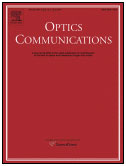 | Abstract. The most common methods applied in the analysis of photonic crystal fibers (PCFs) are finite difference time/frequency domain (FDTD/FDFD) method and finite element method (FEM). These methods are very general and reliable (well tested). They describe arbitrary structure but are numerically intensive and require detailed treatment of boundaries and complex definition of calculation mesh. So these conventional models that simulate the photonic response of PCFs are computationally expensive and time consuming. Therefore, a practical design process with trial and error cannot be done in a reasonable amount of time. In this article, an artificial intelligence method such as Neuro–Fuzzy system is used to establish a model that can predict the properties of PCFs. Simulation results show that this model is remarkably effective in predicting the properties of PCF such as dispersion, dispersion slope and loss over the C communication band. | 3 | M. Pourmahayabadi, S. Mohammad Nejad, “Design of ultra-low and ultra-flattend dispersion single mode photonic crystal fiber by DE/EDA algorithm ,” Journal of Modern Optics, Vol. 56, pp. 1348-1357 , 2009. (Taylor & Francis) | 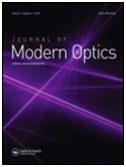 | Abstract. This paper proposes a combination of differential evolution (DE) and estimation of distribution algorithm (EDA) to design photonic crystal fiber structures with desired properties over the C communication band. In order to determine the effective index of propagation of the mode and then, the other properties of structure, a finite difference frequency domain (FDFD) solver is applied. The results revealed that the proposed method is a powerful tool for solving this optimization problem. The optimized PCF exhibits a dispersion of 0.22 psnm-1km-1 at 1.55 μm wavelength with a variance of ±0.4 psnm-1km-1 over the C communication band and a nearly zero dispersion slope. | 4 | M. Pourmahayabadi, S. Mohammad Nejad, “ Advanced design and optimization of single mode photonic crystal fibers ,” Journal of Modern Optics, Vol. 56, pp. 1572-1581, 2009. (Taylor & Francis) |  | Abstract. This paper proposes a combination of differential evolution (DE) and estimation of distribution algorithm (EDA) to design photonic crystal fiber structures with desired properties over the C communication band. In order to determine the properties of PCFs such as dispersion, dispersion slope and loss, an artificial intelligence method, the Nero-Fuzzy system, is applied. In addition, a special cost function which simultaneously includes the confinement loss, dispersion and its slope is used in the proposed design approach. The results revealed that the proposed method is a powerful tool for solving this optimization problem. The optimized PCF exhibits an ultra low confinement loss and low dispersion at 1.55 μm wavelength with a nearly zero dispersion slope over the C communication band. | 5 | K. Fasihi, S. Mohammad Nejad, “Orthogonal Hybrid Waveguides: An Approach to Low Crosstalk and Wideband Photonic Crystal Intersections Design,” Journal of Lightwave Technology, Vol. 27, 2009. (IEEE) | 
| Abstract. A low crosstalk and wideband photonic crystal (PC) waveguide intersection design based on two orthogonal hybrid waveguides in a crossbar configuration is proposed. The finite-difference time-domain (FDTD) and coupled-mode theory (CMT) methods are used to simulate the hybrid waveguides of square lattice. The bandwidth (BW) and crosstalk of the intersection are investigated for various radii of the coupled cavities. It is shown that simultaneous crossing of the lightwave signals through the intersection with negligible interference is possible. The transmission of a 200-fs pulse at 1550 nm is simulated by using the FDTD method, and the transmitted pulse shows negligible crosstalk and very little distortion. | 6 | K. Fasihi, S.Mohammad Nejad, “Highly efficient channel-drop filter with a coupled cavity-based wavelength-selective reflection feedback, ” Optics Express, Vol. 17, pp. 8983-8997, 2009. (OSA) | 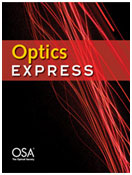 | Abstract. We have proposed a three-port high efficient channel-drop filter (CDF) with a coupled cavity-based wavelength-selective reflector, which can be used in wavelength division multiplexing (WDM) optical communication systems. The coupling mode theory (CMT) is employed to drive the necessary conditions for achieving 100% drop efficiency. The finite-difference time-domain (FDTD) simulation results of proposed CDF which is implemented in two dimensional photonic crystals (2D-PC), show that the analysis is valid. In the designed CDF, the drop efficiency larger than 0.95% and the spectral line-width 0.78nm at the center wavelength 1550nm have been achieved. |
|
|
|
|
|
|
|
|
|
|
|
|
|
|
|